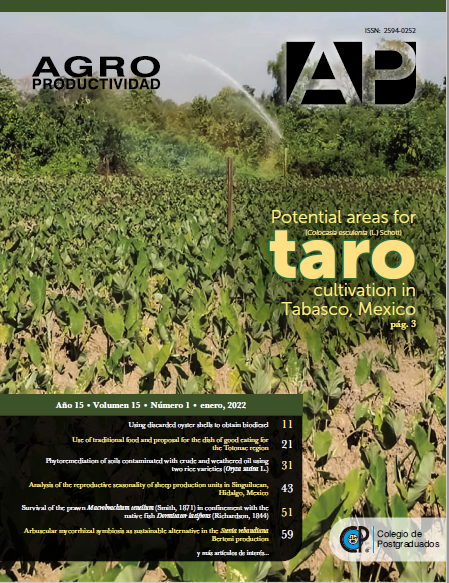Morphology and quality of forage in buffel, rhodes and bluegrama grass in Valle del Mezquital Grasses of semiarid
Main Article Content
Keywords
forage grasses, Bouteloua, grasslands
Abstract
The objective of the study was to evaluate the production and quality of forage in buffel (Pennisetum ciliare), rhodes (Chloris gayana) and blue grama (Bouteloua gracilis) with three defoliation dates at 50, 80 and 110 days after regrowth (dar) in Valle del Mezquital. Crude protein (CP), neutral detergent fiber (NDF), acid detergent fiber (ADF), total digestible nutrients (TDN), relative forage value (RFV) and metabolic energy (ME) were determined. A completely randomized design with three repetitions was used and Tukey for separation of means (α 0.05) and GLM SAS to analyzer data. The highest forage production occurs in rhodes grass at 110 dar (12936 kg DM ha-1). The highest CP (10.6%) was found in buffel at 50 ddr, in rhodes grass both values (80 and 110) dar the were lower than 7%. The largest RFV were for exotic grasses; however, blue grama registered higher TDN. The lowest ME is operated in rhodes at 80 dar (1.76) and higher for buffel at 50 dar (1.91). The three varieties could defoliate when the plants show intermediate values in yield and nutritional value, that is, after 80 days of regrowth; individually it is recommended to defoliate buffel and rhodes at 50 dar.

